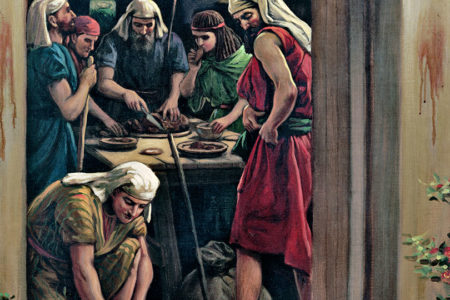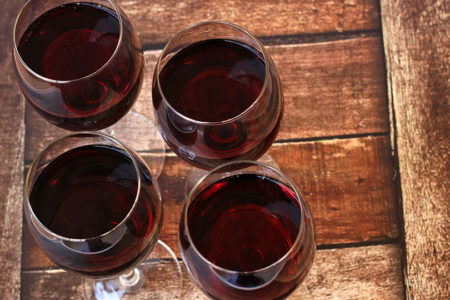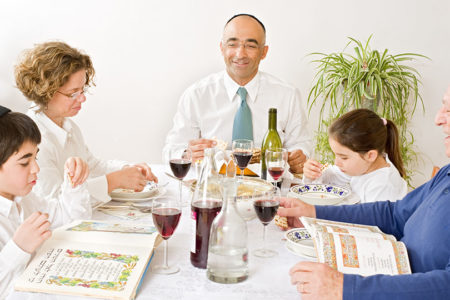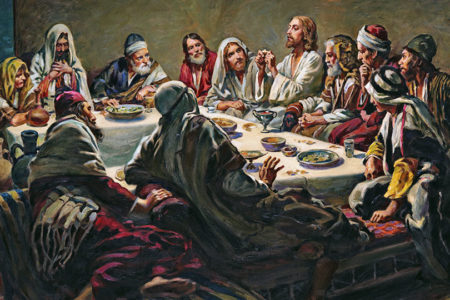Fun, Food, Family: The Traditions of Passover
Sweet treats and wonderful aromas always awaited me at my grandmother’s home on Passover. Even today, I have vivid memories of delectable chocolate-raspberry jelly rings and soft coconut macaroons.
My favorite dish, though, was Grandma’s homemade matzoh ball soup with its perfect balance of chicken and seasoning and exactly the right-sized, dumpling-like matzoh balls. Of course, before that was served, the slimy gefilte fish with horseradish made its appearance on a bed of lettuce. Some people loved it. I was not a fan.
Passover is a sacred time of remembrance. But it is also a joyous time for getting together with family and friends to celebrate God’s deliverance of His people from the harsh hand of the Egyptians more than 3,400 years ago.
The holiday traditionally lasts for eight days, with a seder on the first and second nights. This year the first seder is on March 25. The modern observance involves much preparation, and there are many tasks that can involve everyone.
Special dishes and silverware, reserved for Passover alone, are brought out of storage. Besides the regular house-cleaning, Jewish families purge their homes of all leaven—products containing yeast. Traditionally, a family will go through the house with a wooden spoon, feather, and a lit wax candle looking for any crumbs containing leaven. Usually a few cracker crumbs are left behind on purpose for the children to find. When they spot the crumbs, they sweep them onto the spoon with the feather and take them outside to be burned. Sometimes bread and other yeast products are given or sold to Gentile neighbors until Passover has ended.
No yeast products are to be eaten during Passover week. Jewish children can sometimes be spotted at school eating peanut butter and jelly sandwiches on matzoh instead of bread.
Seder guests sit at the dinner table and follow a booklet called a Haggadah, which means “showing forth.” Since it is a holiday to remember and teach the next generation about God’s deliverance of His people, children are deeply involved in the celebration. The youngest child asks the famous Four Questions to the seder leader:
- Why is this night different from all other nights? On all other nights we eat either leavened bread or matzoh, but on this night we eat only matzoh.
- On all other nights we eat vegetables and herbs of all kinds. Why on this night do we eat bitter herbs especially?
- On all other nights, we never think of dipping even once. Why on this night do we dip twice?
- On all other nights, everyone sits up straight at the table. Why on this night do we all recline?
Then the leader answers from the Haggadah. In her article “Making Passover Fun” at education.com, Lisa M. Cope offers suggestions for making the seder more enjoyable for youngsters by using “kid-friendly haggadahs” and stocking the table “with finger puppets or props for all of the ten plagues.”
This is the one night where children are even allowed to put their fingers into their drinks. As the leader recites the plagues one by one, everyone dips his little finger into his cup, placing a drop of juice or wine on his plate. When the recitation is over, the 10 spots on each plate become an object lesson.
There are many items to taste at the Passover table to help Jewish people remember their heritage in order to keep it alive through the generations. Parsley dipped in salt water symbolizes the tears shed as slaves. More horseradish is available to try with the matzoh. This, too, serves as a reminder of the bitterness the Israelites endured. Eating the charoset, a mixture of apples and honey, is always a treat and serves as a reminder of the sweetness of freedom when Pharaoh finally let God’s people go.
Of course, it wouldn’t be a Jewish holiday without music. Lively Hebrew music, such as “Dayenu,” which means “for that alone we would be satisfied,” is sung at the table.
The highlight of the evening for the children, though, is the search for the afikomen. Earlier in the evening, the seder leader hides a wrapped piece of matzoh.(See “The Marvelous Afikomen”) After the meal, the children are dismissed to find it. It is entertaining for the adults to watch them search, and it is fun for the children to know that whoever finds the afikomen can redeem it for a prize, usually money.
The actual dinner is a wonderful event. My grandmother always made chicken, potatoes, and green beans. We even got our own can of soda. Of that, I was a big fan!
Based on the Hebrew Scriptures, Jewish people believe the prophet Elijah will announce the coming of the Messiah: “Behold, I will send you Elijah the prophet before the coming of the great and dreadful day of the Lᴏʀᴅ” (Mal. 4:5). So each year at seder tables around the world, a place is set for Elijah in hopes that he will come. At a point in the festivities, a child is sent to open the front door to see if Elijah is there. A hearty verse of “Eliyahu Hanavi” (Elijah the Prophet) is then sung.
For dessert, there are more candy jelly rings, as well as chocolate and coconut macaroons. Sesame candy is a favorite for some; and sweet honey cake, pound cake, or apple cake (all made without leavening) is often served.
When the time came to go home from the seder, my grandmother would slip each of my siblings and me a fresh dollar bill and a box of Chiclets. We’d say our goodnights and agree on how nice it would be for our seder to take place “Next year in Jerusalem!”







